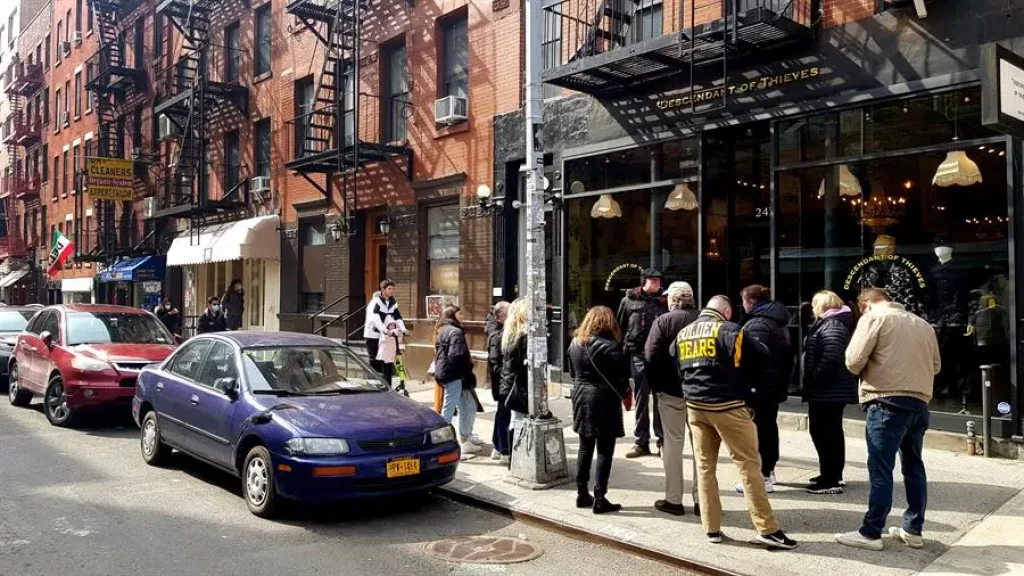In the pulpit of the old St. Patrick’s Cathedral, in the Italian quarter of Manhattan, one of the most memorable scenes of “The Godfather” was filmed, when Michael Corleone (Al Pacino) becomes godfather to his nephew and the Mafia, while the capos of the families that control the darkest side of New York are assassinated.
Next Monday marks the 50th anniversary of the premiere of this mythical film. Francis Ford Coppola had managed to embark the giant Marlon Brando (Don Vito Corleone), the unknown Al Pacino, James Caan (Sony Corleone), and Diane Keaton (Kat Adams) among many others, in a project in which practically only Coppola and the writer and screenwriter Mario Puzo believed, to make it a Shakespearean gem of the big screen.
Time has not passed for a film that has left phrases like “I’ll make you an offer you can’t refuse” or “it’s not personal, it’s just business” in the popular heritage of half the world, although it has gone through the New York Mafia, which in the 80s and 90s of the last century ended up losing the pulse with the security forces and the political class for the control of the threads that handle the metropolis.
REALITY AND FICTION COME TOGETHER IN “LITTLE ITALY”
“Little Italy”, the Italian neighborhood of Manhattan, is also not the overcrowded district that in the 1930s, with unhealthy houses crowded with immigrants fleeing hunger and poverty in Italy, saw the rise of Italian-American gangsters, the “Black Hand” or the “Cosa Nostra”.
But among the festive decorations to attract tourists, the souvenir shops and the innumerable terraces and Italian restaurants that today flood the neighborhood, the mythical places of the real history of the Italian-American mafia and the fiction of the big screen are mixed.
Joel, tour guide of “Metro NYC Tours”, reveals to a group of curious people some of the secrets that Mulberry, Mott, Kenmare, Hester or Prince streets hide, from the old Saint Patrick’s Cathedral where Michael Corleone renounces Satan while killing rivals, to the restaurant where the gangster Joe Gallo was murdered on April 7, 1972, and whose name “Umbertos” can still be read, if you pay attention, in front of the door of the current restaurant located on Mulberry Street.
In the same neighborhood, on Mott Street, is Vito Corleone’s fictitious “Genco” olive oil company and, opposite, the place where the capo went to buy some oranges when a drug lord Virgil Sollozo’s thug unsuccessfully tries to assassinate him. , and which is now part of Manhattan’s Chinatown.
Not far from there is also the place that housed the “Ravenite” social club, which for decades was the headquarters of the Gambino family, one of the five royal families that imposed their law in the city together with the Bonano, the Luchese, the Colombos, and the Genovese.
And also the place “The Mulberry Street Bar” where scenes from the third installment of The Godfather, the feature film Donnie Brasco or the series “The Sopranos” were shot.
“On this sightseeing tour you can see where reality and fiction differ and where they overlap,” says Joel at the end of the two-hour tour.
THE TORTOUS ROAD TO OLYMPUS
But the creation of this film, considered by many to be the best of all time, was a road full of thorns, with budget problems and bitter discussions between Coppola and the production company Paramount, which had bought the rights to an unfinished novel by a Puzo who desperately needed money.
With a lot of effort and patience, accompanied by fear of being fired and constant headaches, the young Coppola managed to get the initial project, which had a budget of two million dollars for a film lasting one hour and 45 minutes, to end in an epic story shot between New York, Sicily (Italy) Las Vegas (Nevada) and Los Angeles (California) of two hours and 55 minutes and a cost three times higher than budgeted.
It took Coppola blood, sweat, and tears to convince the producers to include Brando in the project, who was not only any longer the young star that had cast a spell over Hollywood in the 1950s, but also carried the stigma of being an actor who he had abandoned himself and with whom it was very difficult to work.
Nor was it easy to convince Paramount of the suitability of Al Pacino, who despite having won a Tony Award for theater, was a great unknown on the big screen.
But the obstinacy of Coppola, who from the beginning had in his head this story about the Mafia written and directed for the first time by Italian-Americans, managed, little by little, to tear down walls and open windows to give light to this mythological work of the light-dark, sinking into the hidden face of the American dream, economic success at all costs.
“I believe in America” (I believe in the United States), is the first sentence of the film, which is still heard with a black background and is pronounced by Amerigo Bonasera, owner of a funeral home in New York, as the start of a speech in which he ends up asking Vito Corleone to do justice and kill the man who has abused his daughter.
